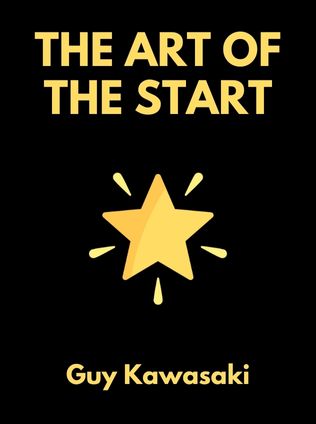
The Art of the Start
The Time-Tested, Battle-Hardened Guide for Anyone Starting Anything
By Guy Kawasaki
Published 09/2004
About the Author
Guy Kawasaki is a renowned figure in the world of technology and entrepreneurship. He is the managing director of Garage Technology Ventures, an early-stage venture capital firm focusing on high-technology companies. Previously, Kawasaki served as an Apple Fellow at Apple Inc., where he played a pivotal role in marketing the Macintosh in the 1980s. His career is marked by a unique ability to turn ordinary consumers into passionate evangelists, a skill he honed at Apple and later applied to numerous startups. Kawasaki is also a prolific author, with seven books to his name, including Rules for Revolutionaries and How to Drive Your Competition Crazy.
Main Idea
"Entrepreneur" is not just a job title; it is a state of mind for those who want to change the future. This is the essence of Guy Kawasaki's The Art of the Start. Kawasaki emphasizes that doing, rather than merely learning to do, is the heart of entrepreneurship. His goal is to help you harness your knowledge, passion, and determination to create something significant without getting bogged down in theory and unnecessary details. He presumes that your goal is to change the world, not just study it.
Table of Contents
- Causation: The Art of Starting
- Articulation: The Art of Positioning
- Articulation: The Art of Pitching
- Articulation: The Art of Writing a Business Plan
- Activation: The Art of Bootstrapping
- Activation: The Art of Recruiting
- Activation: The Art of Raising Capital
- Proliferation: The Art of Partnering
- Proliferation: The Art of Branding
- Proliferation: The Art of Rainmaking
- Obligation: The Art of Being a Mensch
Causation: The Art of Starting
To alter the future, an entrepreneur must first make meaning. This means creating something that makes the world a better place. Kawasaki emphasizes the importance of making a mantra, a powerful and emotional statement that encapsulates what your company is all about. Getting your product or service to market quickly is crucial, even if it isn't perfect.
Defining your business model succinctly is also key. Kawasaki advises targeting your customer specifically and keeping your description simple, ideally in ten words or less with minimal jargon. He suggests emulating a successful business model that is already well understood.
Weaving a MAT – Milestones, Assumptions, and Tasks – is another critical step. This involves compiling lists of milestones you must meet, assumptions about your business, and tasks necessary to design, manufacture, sell, ship, and support your product or service. Kawasaki also highlights the importance of creating business cards and letterheads immediately, along with establishing a web presence with a domain name.
Sign up for FREE and get access to 1,400+ books summaries.
You May Also Like
The Lean Startup
How Today's Entrepreneurs Use Continuous Innovation to Create Radically Successful Businesses
By Eric RiesWho Moved My Cheese?
An Amazing Way to Deal with Change in Your Work and in Your Life
By Spencer Johnson, M.D.Make Your Bed
Little Things That Can Change Your Life...And Maybe the World
By William H. McRavenThe Ride of a Lifetime
Lessons Learned from 15 Years as CEO of the Walt Disney Company
By Robert Iger



















